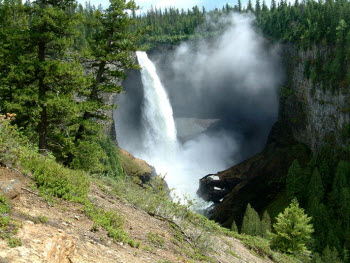Form a Land Trust
A Land Trust or Conservancy is a provincially or federally registered non-profit, charitable society.
Who can form a Land Trust?
A Land Trust can be set up by a group eligible to form a non-profit charitable society or organization.
Why form a Land Trust?
- preserve and protect the ecological integrity of the land even though the land may be bought and sold
- protect habitats for other species and for the future sustainability of the ecosystem
- protect watershed areas, riparian areas, streams and other water sources
- protect heritage or cultural features of land
- maintain control over land and natural resources at the community level
- plan, protect, and manage for the long term needs of both the land and the people, rather than for short term economic returns from land speculation and development
- provide land or historical features as a community resource, educational tool, or area be stewarded in an ecologically appropriate manner
- place land and water (including agricultural, forestry or other human use areas) in trust for the common benefit of this and future generations of all life
- provide access to land and housing for people with a shared vision of stewardship which they could not otherwise afford to buy (generally referred as a Community Land Trust)
- provide a land base for community education/economic development
Steps in the formation of a Land Trust
- Decide what kind of a land trust you want to be and draft a mission and statement of purpose with clear objectives. Consider which Land Trust activities you want your land trust to undertake.
- Consider whether you will have the resources to do these activities.
- Consider the statement of purpose in the context of CCRA regulations for charitable organizations. (This is very important before drafting your Purpose & Goals within the Incorporation documents – some Purposes are not compatible with CCRA)
- Decide about membership and management Options include:
- membership organization which elects the board
- small society where all members are also directors
- society with directors appointed by another organization
- Recruit people with the goals and skills you need (both for the founding board and for future volunteers or staff).
- Do visioning workshops, board development, strategic planning etc., Make sure there is consensus about the big questions.
- Become familiar with the Societies Act, draft a constitution and bylaws, then apply for incorporation. This should be done carefully and thoughtfully, as weaknesses in the bylaws and constitution may come back haunt you later.
- Make application to CCRA for Charitable status.
- Join professional or other compatible, like-minded orgs like the LTABC, who can help you achieve your goals and purposes.
- Apply for general designation to hold Conservation covenants (after co-holding a covenant with another land trust.)
General Activities and Tools of a Land Trust
Land trusts (or conservancies) usually provide Stewardship Education (schools, the community as a whole, landowners individually), hold Conservation Covenants or acquire lands outright.
Tools include outright purchase, life estate, right of first refusal, conservation covenants, management agreements, leases, etc.
Activities for a Land Trust
- Fund raising for an operating budget, land acquisition, monitoring & stewardship programs and an endowment fund (for example, estimated “hard costs” of holding a covenant can run from 6 to 12k)
- Membership and public support (for volunteers, for donor support, for community support)
- Public education, information, and assistance with stewardship and conservation
- Partnerships with other organizations
- Land Acquisition
- Land protection
- Working with land owners and other land trusts to draft and hold conservation covenants
- Land Management
- Supervising, monitoring, and ensuring compliance forever
- Record keeping. Land trust activities create mounds of information which must be catalogued, protected and updated
- Communications & Training
- Policy, standard & practices development
- Board, Staff and volunteer recruitment & training
- Preparation and storage of documents, databases, photographs, legal documents etc.
- Research & Inventory of Priority areas, species, values and features for stewardship and conservation
For further information refer to the latest LAND magazine.
Warning: if you intend to receive donations of land or buildings, hold conservation covenants, or generally protect land or buildings in perpetuity, you need to ensure that you have: (a) a solid group who will help develop strong community support and (b) solid financial planning and support to continue the organization beyond the founding board’s duration and (c) ability to monitor and steward lands or covenants you hold in the mid-to long-term future. If you don’t feel you have this ability, why not seek out existing land trusts in your area to work with initially.






